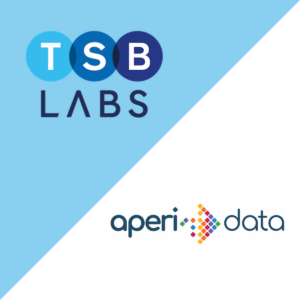After years of warnings, headlines, and consultation papers, it’s finally happening: from next July, Buy Now Pay Later (BNPL) lenders will be required to run affordability checks before offering credit.
The FCA’s announcement ends a long period of uncertainty for a market that’s expanded quickly with limited oversight. Around 11 million people in the UK used BNPL in the past year, with nearly a third of 25–34-year-olds using it at least once. For many, it’s become a mainstream payment method (now as common as an overdraft).
But as usage has grown, so have the risks: missed payments, escalating debts, and a lack of safeguards for those who need them most.
In this blog, we look at why traditional credit data isn’t enough to meet the new requirements and how Open Banking data can give lenders the real-time insight they need to make proportionate, compliant decisions.
BNPL regulation is coming: what lenders need to prepare for

From July 2026, BNPL lenders will be required to carry out affordability checks before offering credit. It’s a long-awaited change for a sector that has, until now, grown with minimal regulatory friction.
The new rules introduce affordability assessments, access to the Financial Ombudsman, and clearer customer disclosures around fees, cancellations, and the impact of missed payments. But they stop short of prescribing how checks should be done. That responsibility sits with lenders, and it comes with both operational and compliance risk.
Firms will need to strike the right balance between rigour and responsiveness. Over-engineered models risk introducing delay or dropout in what is still a low-friction digital experience. But superficial checks, especially those built solely on lagging credit bureau data, won’t hold up under scrutiny.
The key phrase is proportionate. Lenders must design checks that reflect the customer’s financial position at the moment of decision, not weeks or months before. That puts a spotlight on data latency, model transparency, and auditability.
Lenders will need a way to assess current financial health, rather than relying on past credit behaviour. And that’s where Open Banking data comes in. Regulated Open Banking data—cleaned, categorised, and traceable—can provide the coverage and clarity needed to satisfy both compliance teams and digital product owners.
The limits of traditional credit data

Credit bureau data remains a useful tool, but it was never designed to answer real-time affordability questions. It’s built to assess risk over longer time horizons, based on historical borrowing behaviour. That creates blind spots when applied to short-term, fast-moving products like BNPL.
That creates three specific limitations lenders will need to address:
- Latency: Credit files are often updated monthly, or less frequently, depending on the lender’s reporting cycle. By the time an affordability check is run, the data may already be out of date. This creates a gap when a customer’s income has changed recently or when new short-term commitments haven’t yet appeared in their file.
- Completeness: Many BNPL users are thin-file or near-prime. They may have little or no formal credit history, but that doesn’t mean they lack financial activity. Much of it simply sits outside the bureau’s line of sight.
- Granularity: A credit file can show how a customer has repaid loans or credit cards, but it won’t show what they’re spending on today. It can’t flag whether someone is stretching to cover essentials, or whether early signs of financial stress are starting to appear.
None of these issues are new. But under the incoming rules, they carry more weight. Lenders will be expected to make decisions based on current, not theoretical, affordability, and they’ll need the data to prove it.
Credit data vs. Open Banking data for BNPL affordability checks
Traditional credit data still plays a role, but when it comes to assessing real-time affordability for BNPL, it doesn’t show the full picture. The comparison below outlines where those limitations appear, and how Open Banking data can provide a more accurate view:
| Traditional credit data | Open Banking data | |
| Latency | Often 30+ days old; dependent on lender reporting cycles | Real-time access to current account activity |
| Coverage | Limited for thin-file, gig economy, or low-credit users | Captures income and spending patterns across all current accounts |
| Granularity | High-level indicators (e.g. balances, missed payments) | Transaction-level categorisation (e.g. income volatility, BNPL stacking) |
| Affordability context | Inferred from past credit behaviour | Based on actual income, outgoings, and discretionary spending |
| Use case fit | Designed for long-term lending and risk scoring | Designed for point-in-time affordability and behavioural assessment |
| Regulatory defensibility | May require additional context or overlays | Transparent, explainable, and aligned to proportionality expectations |
With regulation moving ahead, lenders need data that reflects how a customer is managing their money today (not last month). That’s where real-time, granular insight becomes essential.
What Open Banking adds to the picture

Open Banking doesn’t replace credit data, but it fills in what’s missing when assessing short-term affordability. For BNPL, where decisions are often made in seconds, the value lies in seeing how a customer is managing their finances today—not weeks ago.
With live transaction data, lenders can:
✅Verify income: from salary, benefits, and other regular sources
✅Identify income instability: including recent reductions, delayed payments, or inconsistent earnings
✅Measure committed outgoings: such as rent, council tax, utilities, or existing credit repayments
✅Track early signs of strain: reliance on overdrafts, missed bills, or limited disposable income
✅Surface risky behaviours: including gambling, BNPL stacking, or frequent use of short-term credit
These indicators support more accurate, proportionate affordability checks. They allow lenders to apply the right level of scrutiny based on the applicant’s current situation, rather than relying on fixed rules or historical averages.
That difference can be the deciding factor between a well-calibrated decision and one that risks being challenged.
Meeting regulatory expectations without adding risk
As of now, the FCA isn’t prescribing how BNPL firms should carry out affordability checks, but the requirement to do them is now confirmed. That gives firms some flexibility in approach, but also creates the need for stronger internal justification. If a customer is offered credit, the lender must be able to show how and why that decision was made.
For BNPL providers, this introduces new operational pressure. Risk, compliance, product, and data teams will all need confidence that the approach is consistent, explainable, and based on up-to-date information, especially where customers have limited credit history or show signs of financial pressure.
Checks still need to be fast and user-friendly. But they also need to stand up to the challenge. That’s where Open Banking data adds value: it’s structured, timestamped, and regulated. It can be integrated directly into digital journeys using APIs, reducing reliance on manual uploads or unclear categorisations.
This is where AperiData can help. As a regulated AISP and CRA, we provide real-time, categorised Open Banking data that gives lenders a clear view of how customers are managing their money today. Our API-based tools are designed to fit directly into digital journeys, helping firms assess affordability quickly, accurately, and without adding operational burden.
With regulation confirmed, the focus now shifts to implementation. The firms that invest early in better data and stronger processes will be better equipped to lend responsibly at scale.
Curious how AperiData could support your affordability process? Get in touch today touch—we’d love to help.
Why lenders choose AperiData
Lenders choose AperiData to strengthen affordability checks and reduce risk without slowing down decision-making. Our clients tell us they value:
- Dual regulated status: offering Open Banking data with the same governance and auditability expected from traditional credit reference agencies
- Real-time, categorised insights: going beyond raw transactions to flag income instability, financial stress, and behavioural risk factors
- Flexible integration options: including API and no-code access to suit a range of operational models
- Coverage across the credit lifecycle: supporting not just upfront decisioning, but collections, account monitoring, and remediation
- Support that fits the process: a consultative approach that helps firms get value from the data, not just access to it
- Faster time to value: no long onboarding cycles or complex deployments—just clean, structured data where and when it’s needed
Find out more about how we support lenders with affordability.



